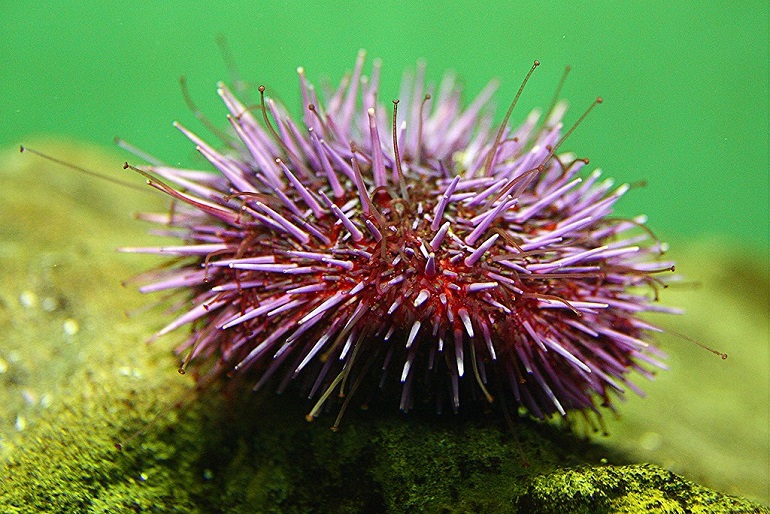We share our planet with some truly intriguing animals, and the sea urchin is no exception. Despite its tiny stature, this unassuming ocean dweller is incredibly capable of thriving in a wide range of conditions, especially impressive when you consider that it lacks a brain.
Urchins come in a variety of vibrant reds, purples, oranges, and greens and are stunning when viewed from above in their natural habitat. You might even mistake a dense population of them for an underwater garden.
Because they move about very slowly during their search for food, they really do look like part of the vegetation. Don’t be fooled by their placid beauty; they are, in fact, living, omnivorous animals.
Read on to learn the fascinating details about them.
What Does a Sea Urchin Look Like?
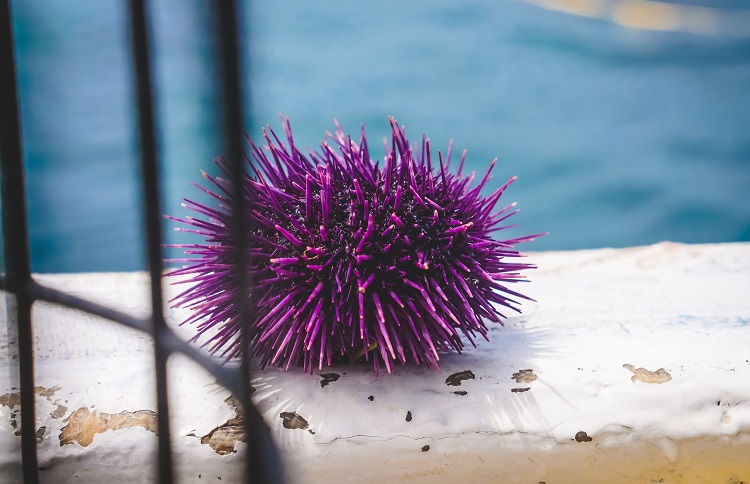
Also called sea hedgehogs, thanks to their similar appearance, sea urchins resemble little balls covered in spines that point out in all directions. An Old French word for hedgehog, irechon even sounds a bit like urchin when you say it out loud.
This unusual-looking marine invertebrate could fit in the palm of your hand, but due to their spiny exterior, it is a good idea to use caution when handling one.
There are two distinct parts of the body that contribute to their stature; the test — a shell-like structure that houses its soft insides, and the spines, which stand out from the test like a coat of armor.
Sea Urchin Size
Depending upon the species, the average diameter of the test could range anywhere from 1 to 4 inches; the largest of the urchins – the red urchin – boasts a test that is 7 inches around. The spines generally add several more inches to the urchin’s modest frame.
Life History and Evolution
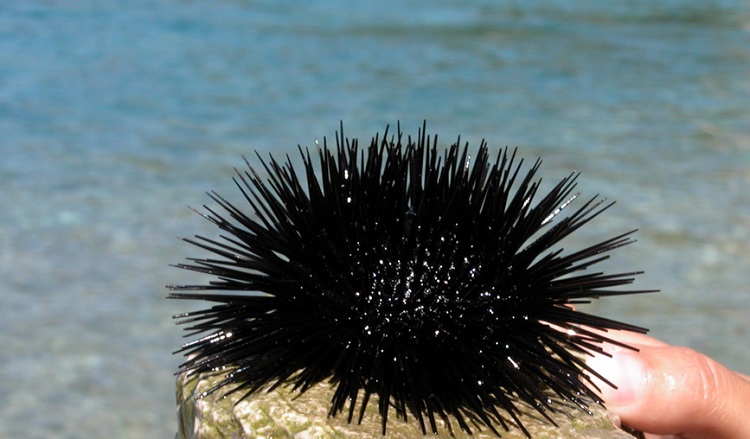
The sea urchin has inhabited the Earth’s oceans for hundreds of millions of years. Fossil study has traced their distant cousins back 450 million years to the Ordovician Period. Those more closely related to the modern urchin have been in existence for 300 million years, emerging during the early Permian Era.
Very few animals have been around longer than the dinosaurs, but the humble sea urchin makes the list, along with sharks and horseshoe crabs. Many species — most notably the dinosaurs — were not so lucky during the mass extinctions of Cretaceous areas.
Urchins may have been better protected from the effects of extreme global warming and violent volcanic explosions deep down on the ocean’s floor. Scientists are continuing to study the unique resilience of the urchin to better understand how they avoided being wiped off the planet.
Sea Urchin Diversity and Classification
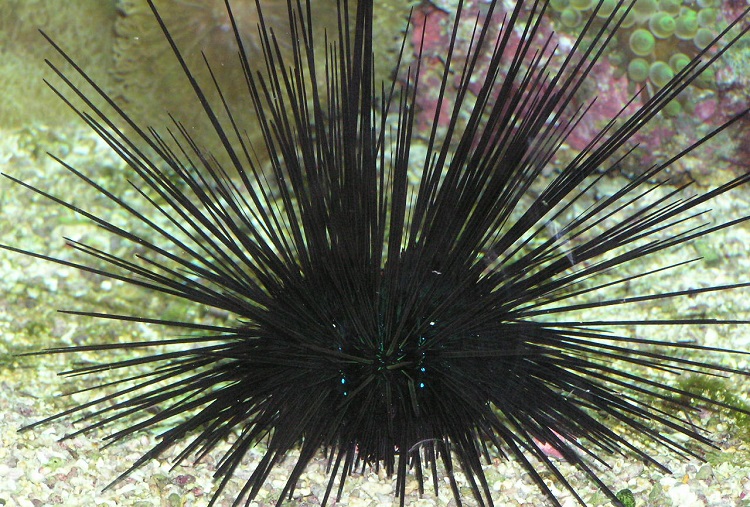
Sea urchins are a diverse group of echinoderms found in oceans all over the world. They vary in size, shape, color, and habitat and are an important part of marine ecosystems.
Types of Sea Urchin
Regular urchins all share similar characteristics; round and spiny. Irregular urchins are typically flat in appearance, with fewer and much shorter “spines” that are often blunt and rounded; think of sand dollars, heart urchins, and sea biscuits.
These animals may not look the same, but they share two unusual qualities; their water vascular system, which is a complex network of water vessels that allow movement using hydraulic pressure, and their 5-sided radial symmetry.
Sea Urchin Species and Population
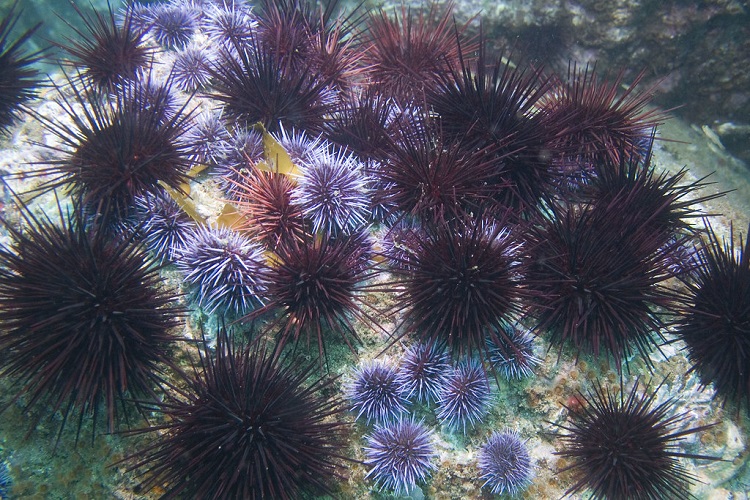
Currently, there are approximately 950 different species of sea urchins that have been identified. They can be found in latitudes ranging from tropical to Arctic but are most common in warmer or temperate waters.
It would be impossible to record an accurate count of their total population, given their size and habitat. Like all animals, they are affected by changes in their ecosystem. Global warming and overfishing influence their numbers, as do disease or a lack of predators.
Where Do Sea Urchins Live?
Urchins can live anywhere from shallow water of tidal pools to the dark trenches of the ocean floor, at depths of 16,000 feet. They are found in all the world’s oceans and like both sandy and rocky bottoms. They thrive in warmer waters and are especially abundant on coral reefs, as algae is a staple of their diet.
Sea Urchin Systems
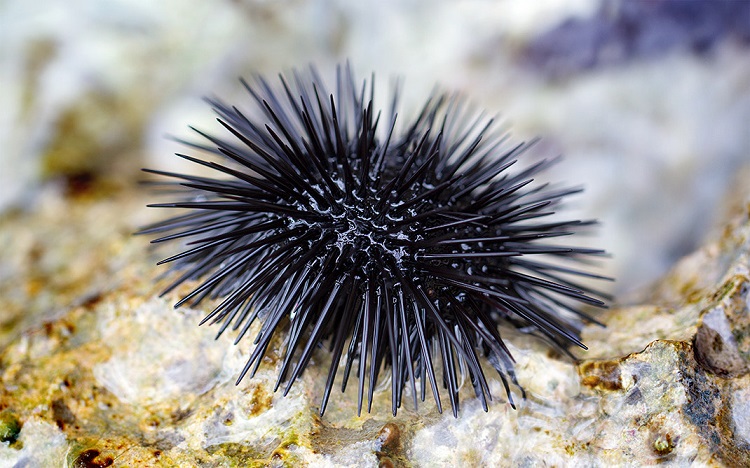
The sea urchin is a fascinating creature with complex internal systems. Understanding the inner workings of the sea urchin system can provide insights into the biology and evolution of this fascinating creature, as well as its importance in marine ecosystems and human culture.
Musculoskeletal
Urchins might look like simple creatures at first glance, but a closer inspection reveals a complex architecture of interlocking plates formed around a central point in five sections. The urchin’s spines obscure this symmetrical design, so it is best observed on the shell of an expired urchin, as their spines fall out when they die.
This layer of fused plates that protects the urchin is known as the test and is often mistaken for the shell. The test is comprised of calcium carbonate segments which join to form a lightweight and porous but very hardy barrier against the elements.
Feeding and Digestion
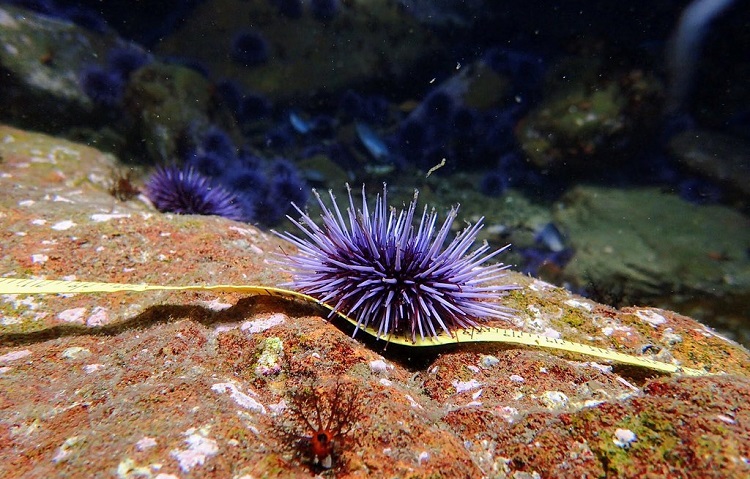
Urchins have an upside-down design that makes sense, especially when you consider they are bottom feeders. The mouth is positioned on its underside, and after food gets digested in the intestine, it is eliminated from a small opening at the top part of the body.
The mouth is well adapted to suit the needs of the urchin and is often referred to as Aristotle’s Lantern after the famous Greek Philosopher. Scholars continue to argue over whether Aristotle was comparing the urchin’s mouth or its entire body to a lantern, and while it may have been a misinterpretation of an ancient text, the name has stuck.
The urchin’s impressive mouth contains five teeth and a tongue-like organ that directs food toward the esophagus. The teeth are strategically formed to make chewing a breeze for these little guys; however, there is more to these tiny teeth than meets the eye.
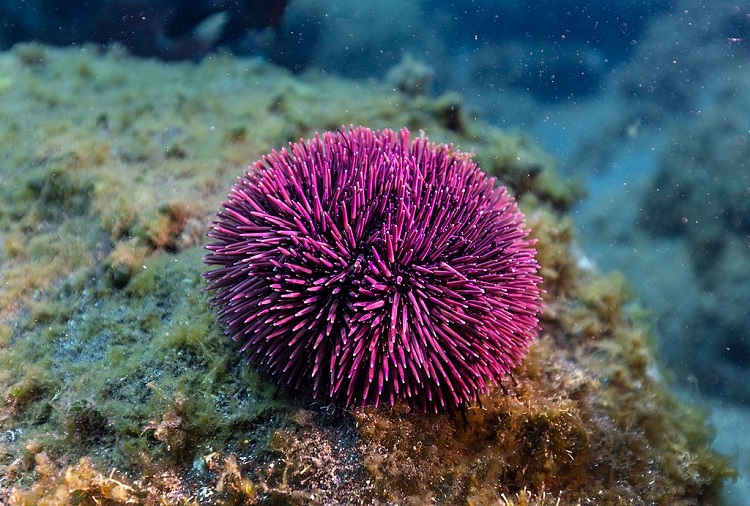
Urchins typically bore into some rather solid materials to create places for burrowing. This keeps them safe from predators or strong currents that might otherwise send them rolling about uncontrollably. Since they routinely chew on things like shells, rocks, and even steel pilings, their teeth need to be up to the job.
A very unusual feature of their teeth allows them to do this – they are self-sharpening –something that scientists observed after magnified studies! Using special cameras, researchers were able to pinpoint the moment that the urchin’s teeth would break off while gnawing on tough materials.
Breaks consistently happened on the same side of the tooth, which created a sharp edge. The other side would remain intact, allowing for continued feeding while the teeth regenerated. It’s an incredible detail that inspired scientists to invent self-sharpening tools for their own use.
Circulation and Respiration
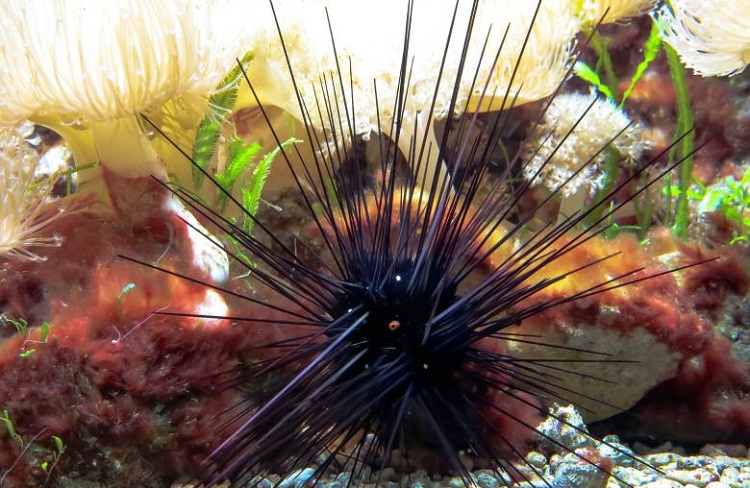
Urchins put their water vascular system to work for digestion, breathing, and getting around. Water flows freely through their bodies, keeping the waste moving out and the oxygen coming in.
Being on the go involves a well-orchestrated series of movements that enables an urchin to move 1 to 2 inches a minute. To “walk,” they use the shorter movable spines on their undersides, which are connected to tubes known as “tube feet.”
When they contract their muscles, water gets pushed into the tube feet, and they are extended; when the process is reversed, and the muscles are relaxed, the feet come back in, creating a “walking“ motion. Their dozens of feet have tiny suction cups on the ends, making them ideal for grabbing onto food or surfaces for stability.
Sensory and Nervous System
Urchins don’t have eyes in the traditional sense, but they are more than capable of “seeing” what’s around them. They respond to stimuli and light through photoreceptor cells in their feet. These cell receptors can sense light, touch, current – even chemicals.
Reproduction and Development
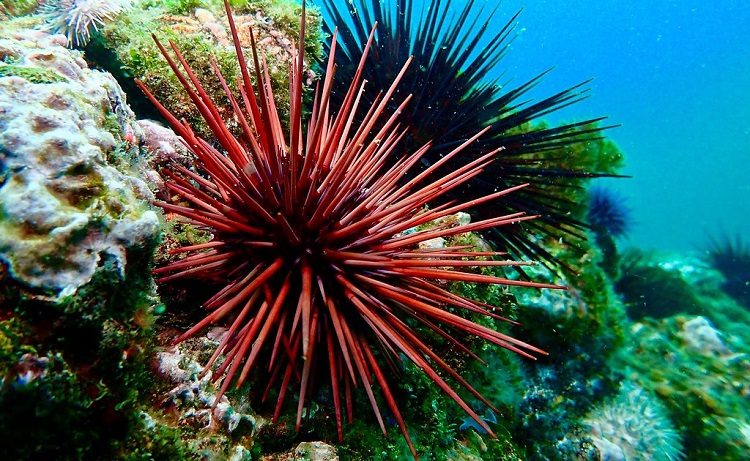
With sea urchins, it is difficult to differentiate between males and females, as they have the same reproductive organs. They have five gonads which hold the roe or sperm until the spawning season. These genital glands are also where the urchin stores its nutrients.
Spawning occurs at different times of the year, depending upon the species. Successful reproduction depends upon optimal water temperatures, and many urchins spawn from late spring to early fall.
Reproduction is done through external fertilization, with sperm and eggs released into the water without the rituals of courtship or mating. Females will release anywhere from 100,000 to 2,000,000 eggs at once to ensure the species’ survival.
With several million eggs floating around the open ocean at any given time, there are bound to be some connections between sperm and egg. Sixty to ninety percent of the eggs don’t make it to the embryo stage; for those that do, they become larvae shortly afterward.
The larvae drift near the surface for many months feeding on phytoplankton before sinking to the sea floor, where their shell keeps growing. If all goes well, full maturity is reached after 3 to 5 years. Aside from the initial process of broadcast spawning, an urchin that reaches full size does so independently of its parents.
Ecology and Behavior
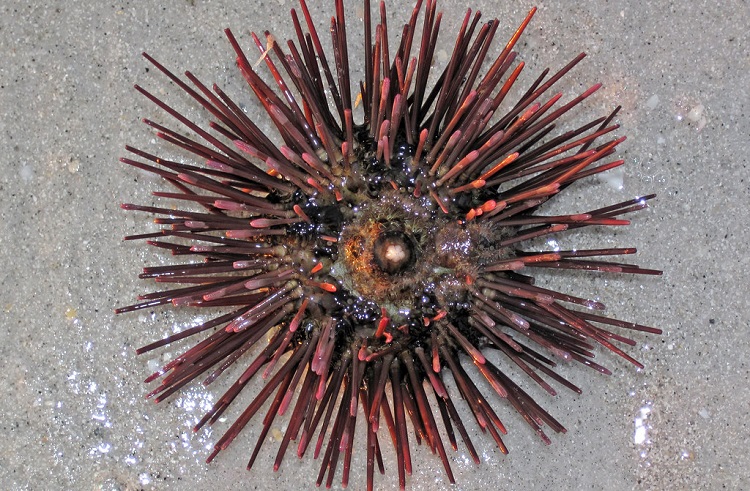
Sea urchins are important herbivores in marine ecosystems, playing a crucial role in controlling algal populations and maintaining a balance of primary producers and consumers. However, sea urchins are also a common prey item for many predators.
Understanding the ecology, predators, and behavior of sea urchins is important for managing marine ecosystems and conserving these fascinating creatures.
Predator and Prey Relationship
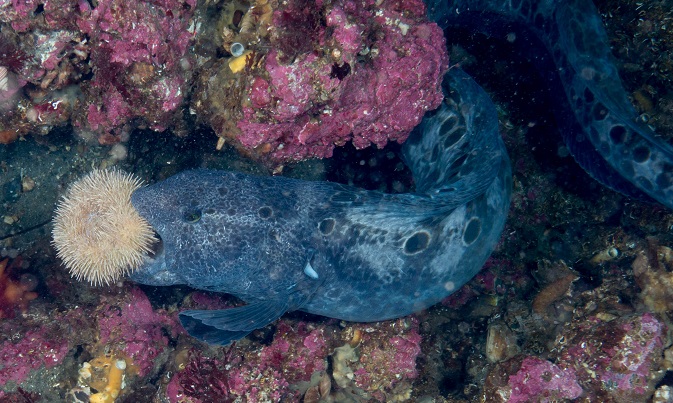
Many marine animals, like sea otters, turtles, and fish, have bilateral symmetry – the appearance of two nearly identical halves. Having two eyes, two ears, and fins, arms, or flippers on each side gives bilateral animals an advantage when migrating and hunting.
Radial symmetry is a design that benefits animals with a limited capability of movement – like the sea urchin, starfish, or jellyfish. Their unique five-point composition gives them access to their surroundings from all directions at once.
For the urchin, who can only move a few inches at a time in search of food, being tuned in to all angles of its environment at once is necessary for survival.
Since they can’t move around very quickly, sea urchins are rather opportunistic when it comes to food. They eat whatever is in front of them, including dead fish that fall to the ocean floor. They also dine on other slow-moving creatures like mussels, barnacles, and periwinkles but are most known for feasting on kelp and algae.
Tropic Level
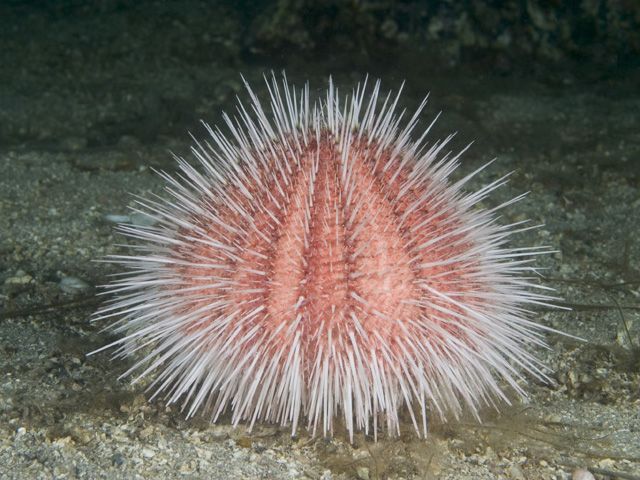
Sea urchins are primary consumers, meaning that their energy comes from eating primary producers or vegetation. They help keep the ocean’s reefs in good health by consuming the algae before it builds up. An overabundance of algae can suffocate a coral reef and be the kiss of death for the sea life who live there.
One such event affected the reefs of the Caribbean in 1983 when a disease swept through and wiped out 95% of the black sea urchins living in those waters. It became clear almost overnight how vital these little “underwater vacuum cleaners” were in keeping the reefs in good condition.
Without the sea urchins to tend to all the intricate crevices of the reef, algae blooms quickly took over, suffocating the coral before the unbelieving eyes of divers and anglers alike.
When a species dies off in such volume and without warning, it almost always has a ripple effect. The massive population loss of the urchins was ecologically devastating to the reef and the surrounding area. Without the presence of the black sea urchins to keep the algae from accumulating, the reefs soon became uninhabitable.
The larger fish that depended upon the smaller reef fish as a food source were suddenly not finding enough to eat. For humans, the death of the reefs meant losing the protection that these natural barriers provided to the surrounding islands during hurricane season.
Defense Against Predators
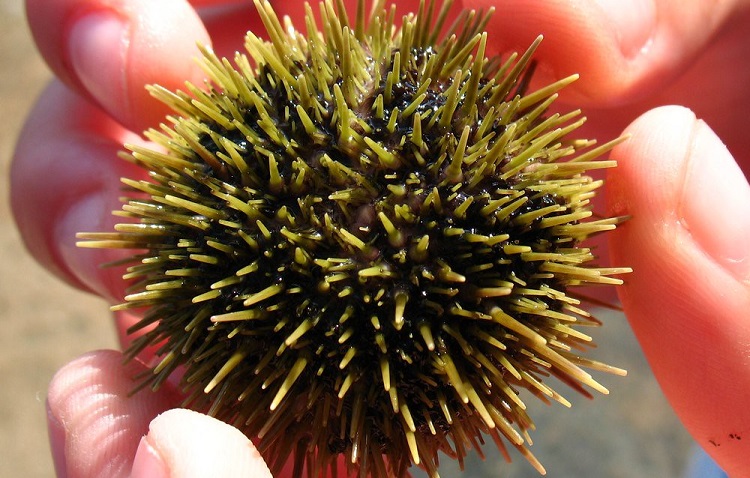
Sea urchins stay out of harm’s way by burrowing in crevices and using their five-sided radial symmetry to their advantage. Some urchins even have poisonous venom, which causes animals of prey to give them a wide berth. However, most oceanic critters are simply deterred by the urchin’s spiny exterior and look for dinner somewhere else.
There are some animals that are specially equipped to handle the spiny exterior of the urchin. The sea otter, lobster, crabs, or sea stars, use powerful adaptions like claws, sharp teeth, or pincers and are unfazed by the urchin’s long spines when making a meal out of them.
Not having any natural predators can be very bad for the environment. A recent decline in the population of both the sea otter and the sea star off the coast of California and Oregon has left the purple sea urchin virtually unchecked.
This lack of predators caused the purple sea urchin to explode in population, increasing by 10,000% in five short years! A 2019 reef watch in Oregon produced an unthinkable count of 350 million urchins in one area alone.
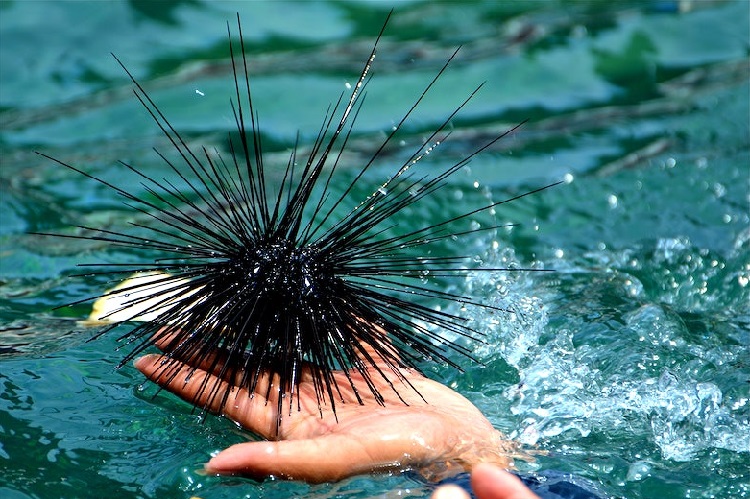
The purple urchin is wreaking havoc on the underwater kelp forests of the Pacific Coast and is now considered an invasive species. These “zombie armies” are feasting on the massive strands of kelp faster than they can grow back.
If you have seen a kelp forest, you are probably thinking it is impossible for an urchin to devour these vegetal skyscrapers. Purple sea urchins don’t eat all of the seaweed; they chew on what can be reached, severing strands several hundreds of feet long from their anchors in the sand.
The kelp drifts piece by piece until the ocean floor resembles a clear-cut forest, and the animals of this marine ecosystem are left with a barren wasteland.
It has been suggested that local fisheries focus on the purple sea urchin as their catch to try to restore balance to the marine life in the area. Until now, they have not been considered a target species for fishermen due to the low yield of product.
Lifespan
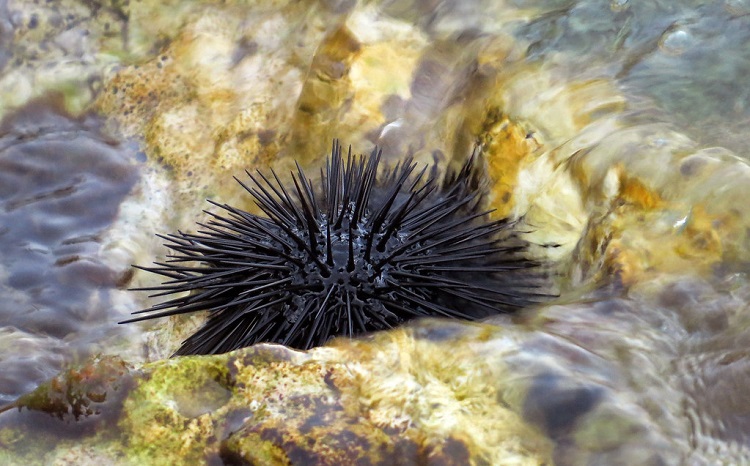
There has been some debate as to the lifespan of sea urchins. Typically, urchins live for 30 years; however, some species, like the red sea urchin, can live for one-hundred years or more. Some scientists have claimed that this urchin has even reached 200 years.
Survival time decreases in captivity, and their overall longevity seems to be in decline, with modern-day factors like overfishing and global warming in effect.
Sea Urchin Facts
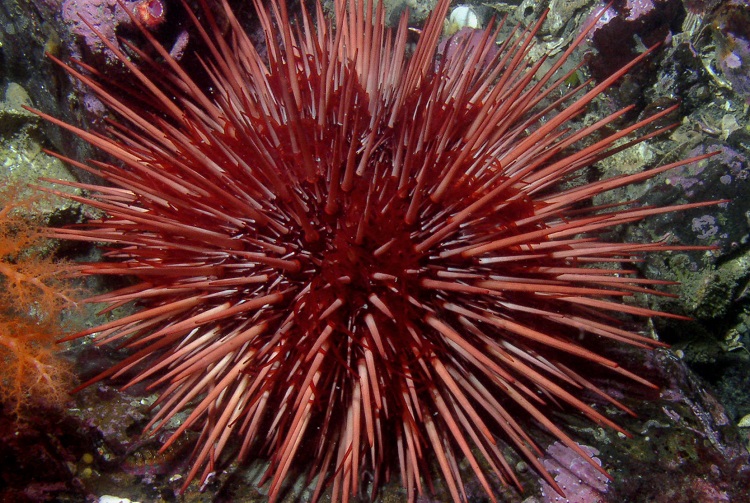
- The Flower Urchin found in Indo-Pacific waters is listed by the Guinness Book of World Records as the “Most Deadly Urchin in the World.”
- They are used as “shields” by Carrier Crabs, who lift them over their heads to ward off predators.
- Many cultures consider them a symbol of luck, and their shells are used as amulets for fertility, healing, and good fortune.
- Their moveable spines help them with more than just “walking” and eating. They also use them to stay clean.
- They breathe through their tube feet.
- A group of engineers invented a claw-like device modeled after the sea urchin’s mouth to be used in space exploration.
- The shingle urchin is the only species that can survive out of water for a few hours at a time.
- Black sea urchins have extraordinarily long spines – the longest measured in at twelve inches.
Sea Urchin Conservation Status
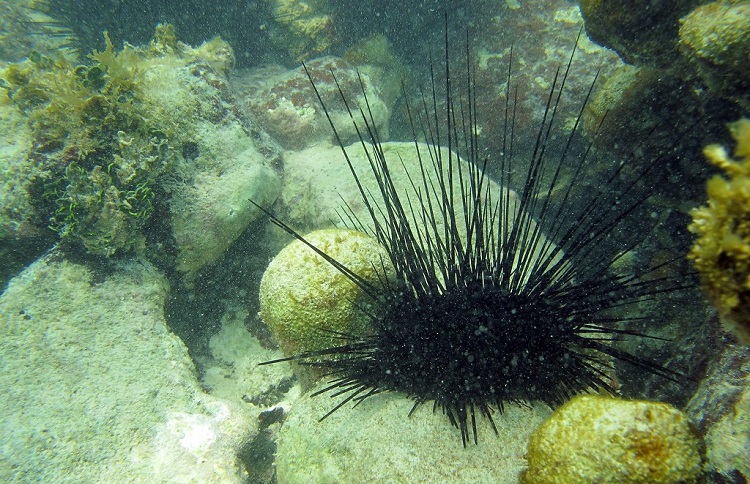
Sea urchin populations will fluctuate because of disruptions in their food chain or disease, but for the most part, the general health of the species is fine. Scientists continue to monitor the effects of global warming on their populations.
The red sea urchin is the largest of the species, with a test that averages 7 inches in diameter. They have fewer underwater predators due to their size; however, human consumption and habitat loss due to overgrazing by the purple hedgehog have affected its numbers.
The large sea urchin,or “European edible hedgehog, as it is also called, is currently considered the most “at risk.” Its popularity with diners has made this variety a casualty of the sea urchin fishery and is currently on the International Union for Conservation of Nature’s “near threatened” list.
Humans and Sea Urchins
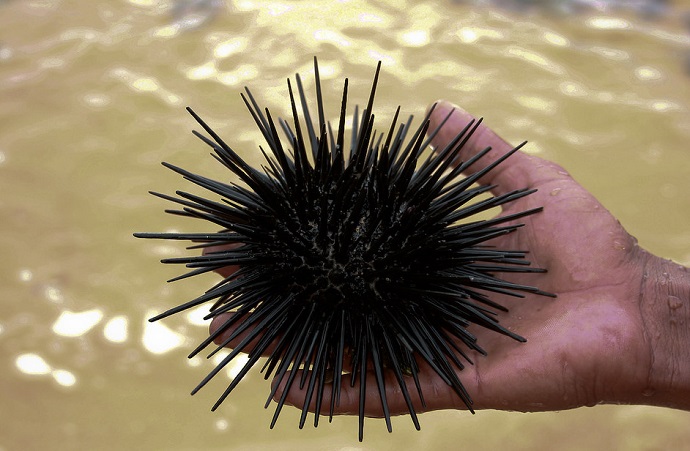
For the adventurous diner, sea urchin roe is considered a delicacy. The roe, or Umi, found inside the gonads, is the only edible part and is usually served raw in Japanese restaurants.
Before eating seafood, use a reference like Seafood Watch, updated by The Monterey Bay Aquarium, to guide you toward fish that are ecologically safe to consume.
If you aren’t a sushi aficionado, the likelihood of seeing a sea urchin up close is slim unless you are swimming in the ocean or exploring a tidal pool. They aren’t aggressive animals; on the contrary, they prefer to be left alone.
To avoid an unexpected encounter with one when enjoying the great outdoors, be aware of your surroundings before going into the sea. When in an area known to have a larger population density close to shore, watch where you step.
The long spines of the sea urchin can be quite painful if they penetrate human skin and must be carefully removed so that they don’t splinter off even more. In severe cases, the urchin could be poisonous, which is a great reason to make sure conditions are safe before diving into unknown waters.
For the victim of a toxic urchin sting, this could be serious. Reactions to venom could result in tissue necrosis, respiratory issues, paralysis, and in rare cases, death. Most sea urchins are safe to handle, but since they won’t survive out of water for very long, it’s best to enjoy them from above while snorkeling.
Conclusion
Sea urchins have a story that goes back further than almost every other being on our planet. Somehow, they’ve withstood the test of time — all without a heart, brain, or bone in their body.
As self-sufficient ocean dwellers with a talent for keeping our coral reefs in pristine health, they are the perfect reminder for humans to slow down and take a closer look at the little things in nature.
Urchins continue to inspire scientists to discover new and improved approaches to solving problems. One can’t help but wonder what this enigmatic being’s secret to survival might be.


